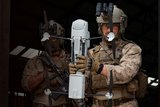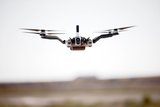What's next for the Pentagon after the Replicator programme?
Although the Replicator initiative has made several accomplishments, there are still multiple gaps to plug across the US Department of Defense (DoD) and its services.
RE2, Inc., a leading developer of intelligent modular manipulation systems, announced today that it has been awarded a Phase I SBIR with the US Army Tank and Automotive Research, Development and Engineering Center (TARDEC) to design sensing and control technologies for semi-autonomous manipulation. These technologies represent the next step in the evolution of robotic manipulation – from tele-operation to more advanced semi-autonomous operations.
The manipulator technologies on existing mobile robots used by military and bomb squads today are still rather primitive in terms of their control and sensing. Operators are required to control each individual joint, usually just one at a time, resulting in a slow and tedious process to position the end-effector at a desired location in order to grasp an object of interest. Additionally, operators typically do not have direct visual line-of-sight to the robot’s working area, forcing the operator to rely on imagery from one or more robot-mounted cameras.
During the six-month Phase I effort, RE2 plans to design a complete Semi-Autonomous Manipulation System (SMS), consisting of a dexterous manipulator, intelligent end-effectors, a single camera-based visual tracking system, and intuitive graphical and speech command user interfaces. RE2 plans to partner with Think-A-Move, Ltd. to investigate the feasibility of integrating speech command and control for semi-autonomous manipulation procedures.
“The primary benefit of the SMS is a significant decrease in the cognitive burden and attention that is required by the operator when controlling the manipulator during Explosive Ordnance Disposal (EOD) and other outdoor, unstructured mission environments, especially missions with tedious and repetitive tasks, thereby decreasing overall mission duration and increasing operator safety,” stated Patrick Rowe, Ph.D., vice president of R&D for RE2, Inc.
Source: RE2

Although the Replicator initiative has made several accomplishments, there are still multiple gaps to plug across the US Department of Defense (DoD) and its services.

Cummings Aerospace presented its turbojet-powered Hellhound loitering munition at SOF Week 2025, offering a man-portable solution aligned with the US Army’s LASSO requirements.

PDW has revealed its Attritable Multirotor First Person View drone at SOF Week 2025, offering special operations forces a low-cost, rapidly deployable platform for strike and ISR missions, inspired by battlefield lessons from Ukraine.

Teledyne FLIR is highlighting the emerging requirements for 'recoverable and re-usable' loitering munitions across the contemporary operating environment during this week’s SOF Week conference in Tampa, Florida.

High-performance maritime industry player Kraken Technology Group, based in the UK, has used the SOF Week conference in Tampa, Florida this week to debut its K3 Scout uncrewed surface vessel (USV) to the North American market.

Red Cat and Palladyne AI recently conducted a cross-platform collaborative flight involving three diverse heterogeneous drones.